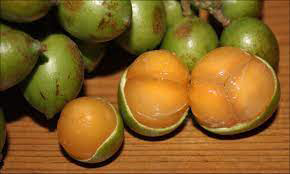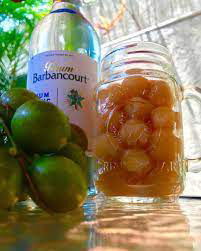Kenep
– Anonymous
This fruit is known by many names in other parts of the world. Kenep is usually called Genip, Spanish lime, Mamoncillo, Ginep, Limoncello, Ginepa, Mamon, Chenette, Quenette, and many more.
It is only available during the summer. Its scientific name is Melicoccus Bijugatus. Kenep do not ripe after harvest. When buying Kenep, make sure it is ripe, shiny, smooth with a light green skin. To keep them fresh simply store them in the fridge. Some Keneq are sweeter than others and have different textures depending on the harvest.

Kenep is related to lychee and has tight, thin but rigid skins. Inside the skin is the tart tangy or sweet pulp fruit covering a large seed. The pulp is usually cream or orange in color and can stain your clothes.
Kenep mostly grows in South and Central America, Puerto Rico, Dominican Republic, Haiti, and other parts of the Caribbean.
To eat Kenep as a snack, first wash the fruit with water, bite into the skin to break it loose or cut it with a knife to remove the skin in its entirety, then suck on the flesh like candy.
As a refreshing treat or cocktail, I invite to try Kenep Trempe. Kenep Trempe means Rum soaked Kenep. It is a Haitian treat you can prepare only during the summer. Start by removing the skin by cracking the skin open either with your thumb or a knife, then place the opened Kenep onto a bowl, add sugar, mint, rum and stir. Lastly, place it in the fridge to be chilled before serving. Although these little egg-shaped like fruit can be eaten easily, the big seed could be a choking hazard and can stain your clothes.
In Haiti, Kenep Trempe can be a snack, a cocktail, or a sweet treat in a hot summer day.

Enjoy!

